学习SpringAI的记录情况
文章目录
前言
因公司需要故而学习SpringAI文档,故将自己所见所想写成文章,供大佬们参考
主要是为什么这么写呢,为何不抽出来呢,还是希望可以用的时候更加方便一点,如果大家有需求可以自行去优化。
SrpingAI入门
这里我用到的是智普AI,大家可以根据自己喜欢用的AI自由进行切换
至于API-KEY可自行去智谱AI开放平台可自行去找,这里新用户注册目前是还送2000万TOKEN的
引包
<!--智普AI--><dependency><groupId>org.springframework.ai</groupId><artifactId>spring-ai-zhipuai-spring-boot-starter</artifactId></dependency>配置文件

至于API-KEY可自行去智谱AI开放平台可自行去找,这里新用户注册目前是还送2000万TOKEN的
配置类
获取API-KEY
@Component
public class ChatConfig {//获取配置文件中的API-KEY@Value("${spring.ai.zhipuai.api-key}")private String apiKey;public String getApiKey() {return apiKey;}
}
测试用例代码
//为啥用这个模型呢,因为免费private static final String default_model = "GLM-4-Flash";//temperature 是一个超参数,用于控制生成文本的多样性和随机性。//低温度(例如:0.1 到 0.3):模型会生成更确定、常规和一致的输出。低温度通常会使模型产生更 加保守的回答,重复性较高,生成的内容更加准确、接近训练数据中的常见模式。//高温度(例如:0.7 到 1.0):模型的输出会更加随机、多样、创意性强。高温度会导致生成的内容 更加多样化,可能包括一些不太常见或创新性的回答,但也可能带来不太准确或不太连贯的结果。private static final double default_temperature = 0.7; @GetMapping("/AIchat")public BaseResponse<String> AIGeneration(@RequestParam(value = "message", defaultValue = "你是谁呢") String message) {// 创建ZhiPuAiChatOptions对象,设置模型和温度ZhiPuAiChatOptions options = ZhiPuAiChatOptions.builder().withModel(default_model).withTemperature(default_temperature).build();// 创建ZhiPuAiChatModel对象,传入ZhiPuAiApi和optionsChatModel chatModel = new ZhiPuAiChatModel(new ZhiPuAiApi(chatConfig.getApiKey()), options);// 创建ChatClient对象,传入chatModelChatClient build = ChatClient.builder(chatModel).build();String substring = "";String content = null;try {// 调用build.prompt()方法,传入用户消息,调用call()方法,获取返回内容content = build.prompt().user(message).call().content();} catch (Exception e) {// 获取异常信息String errorMessage = e.getMessage();// 获取异常信息中冒号后面的内容int i = errorMessage.lastIndexOf(":");String newString = errorMessage.substring(i + 2);// 去掉异常信息中的最后一个字符substring = newString.substring(0, newString.length() - 3);}// 如果异常信息不为空,抛出BusinessException异常if(!substring.isEmpty()){throw new BusinessException(ErrorCode.PARAMS_ERROR,substring);}// 返回成功结果return ResultUtils.success(content);}测试AI返回结果

全参数响应结果
这里是对token的消耗做了一个统计,查看用户的所剩token情况的一个返回结果展示
其实也就只是把String类型的返回结果转成了ChatResponse类型仅此而已
测试用例代码
@GetMapping("/AIchat")public BaseResponse<ChatResponse> AIGeneration(@RequestParam(value = "message", defaultValue = "你是谁呢") String message) {// 创建ZhiPuAiChatOptions对象,设置模型和温度ZhiPuAiChatOptions options = ZhiPuAiChatOptions.builder().withModel(default_model).withTemperature(default_temperature).build();// 创建ZhiPuAiChatModel对象,传入ZhiPuAiApi和optionsChatModel chatModel = new ZhiPuAiChatModel(new ZhiPuAiApi(chatConfig.getApiKey()), options);// 创建ChatClient对象,传入chatModelChatClient build = ChatClient.builder(chatModel).build();String substring = "";ChatResponse chatResponse = null;try {chatResponse = build.prompt().user(message).call().chatResponse();} catch (Exception e) {// 获取异常信息String errorMessage = e.getMessage();// 获取异常信息中冒号后面的内容int i = errorMessage.lastIndexOf(":");String newString = errorMessage.substring(i + 2);// 去掉异常信息中的最后一个字符substring = newString.substring(0, newString.length() - 3);}// 如果异常信息不为空,抛出BusinessException异常if(!substring.isEmpty()){throw new BusinessException(ErrorCode.PARAMS_ERROR,substring);}// 返回成功结果return ResultUtils.success(chatResponse);}返回结果
前端传递不同的模型测试方法
测试用例代码
@GetMapping("/chat")public BaseResponse<String> generation(@RequestParam(value = "message", defaultValue = "你是谁呢") String message,@RequestParam(value = "model", defaultValue = "GLM-4-Flash") String model,@RequestParam(value = "temperature", defaultValue = "0.7") double temperature) {// 创建新的 ZhiPuAiChatOptions 实例,根据请求的参数动态设置ZhiPuAiChatOptions options = ZhiPuAiChatOptions.builder().withModel(model).withTemperature(temperature).build();// 获取 ChatModel 实例,使用新的配置ChatModel chatModel = new ZhiPuAiChatModel(new ZhiPuAiApi(chatConfig.getApiKey()), options);ChatClient build = ChatClient.builder(chatModel).build();String substring = "";// 使用新的 ChatModel 进行对话生成String content = null;try {content = build.prompt().user(message).call().content();} catch (Exception e) {// 获取错误消息String errorMessage = e.getMessage();int i = errorMessage.lastIndexOf(":");String newString = errorMessage.substring(i + 2);substring = newString.substring(0, newString.length() - 3);}if(!substring.isEmpty()){throw new BusinessException(ErrorCode.PARAMS_ERROR,substring);}return ResultUtils.success(content);}其实跟上面的代码差不多,只不过是从前端传递过来一个模型,当然这里我并没有对于上传上来的模型做校验,如果感兴趣的话,可自行查看,并解决
测试结果

这里可以看到我们的异常返回起到效果了,原谅我是一个穷鬼,不想花钱在测试这个上面
测试到这里,相信你已经知道了点什么,就是如果你问的问题较长的话,实际使用GET传输是有问题的,因为默认GET请求的长度是有限制的,建议自行换成POST请求,然后再继续往下
流式响应
测试用例代码
@GetMapping(value = "/AIStream",produces = MediaType.TEXT_EVENT_STREAM_VALUE)public Flux<String> AIStream(@RequestParam(value = "message", defaultValue = "你是谁呢") String message) {// 创建ZhiPuAiChatOptions对象,设置模型和温度ZhiPuAiChatOptions options = ZhiPuAiChatOptions.builder().withModel(default_model).withTemperature(default_temperature).build();// 创建ZhiPuAiChatModel对象,传入ZhiPuAiApi和optionsChatModel chatModel = new ZhiPuAiChatModel(new ZhiPuAiApi(chatConfig.getApiKey()), options);// 创建ChatClient对象,传入chatModelChatClient chatClient = ChatClient.builder(chatModel).build();Flux<String> content = chatClient.prompt().user(message).stream().content();// 返回成功结果return content;}响应结果
这里使用的是SSE,SSE是一种服务端向客户端推送的一种技术,需要的可自行去浏览这个技术

流式响应全参数
测试用例代码
// 使用GetMapping注解,指定请求路径为/AIChatResponseStream,返回类型为TEXT_EVENT_STREAM_VALUE@GetMapping(value = "/AIChatResponseStream",produces = MediaType.TEXT_EVENT_STREAM_VALUE)// 定义一个方法,返回类型为Flux<ChatResponse>,参数为String类型的message,默认值为"你是谁呢"public Flux<ChatResponse> AIChatResponseStream(@RequestParam(value = "message", defaultValue = "你是谁呢") String message) {// 创建ZhiPuAiChatOptions对象,设置模型和温度ZhiPuAiChatOptions options = ZhiPuAiChatOptions.builder().withModel(default_model).withTemperature(default_temperature).build();// 创建ChatModel对象,传入ZhiPuAiApi和optionsChatModel chatModel = new ZhiPuAiChatModel(new ZhiPuAiApi(chatConfig.getApiKey()), options);// 创建ChatClient对象,传入chatModelChatClient chatClient = ChatClient.builder(chatModel).build();// 调用chatClient的prompt方法,传入message,返回一个Flux<ChatResponse>对象Flux<ChatResponse> chatResponseFlux = chatClient.prompt().user(message).stream().chatResponse();// 返回Flux<ChatResponse>对象return chatResponseFlux;}响应结果
至于这里如何查看内容流式响应全参数输出完毕,有一个STOP的停止参数可以使用
位置贴到下面
//全参数流失响应地址接口停止标志--------------当然这里如果你要配合前端可以通过这个STOP来观察结果是否输出完毕,可以通过这个标志来停掉SSE连接 parsedData.results[0].metadata.finishReason === "STOP"
默认角色回复实现
测试用例代码
// 使用GetMapping注解,指定请求路径为/AIChatDefaultStream,返回类型为文本流@GetMapping(value = "/AIChatDefaultStream",produces = MediaType.TEXT_EVENT_STREAM_VALUE)public Flux<String> AIChatDefaultStream(// 使用@RequestParam注解,指定请求参数名为message,默认值为"你是谁呢"@RequestParam(value = "message", defaultValue = "你是谁呢") String message) {// 创建ZhiPuAiChatOptions对象,设置模型和温度ZhiPuAiChatOptions options = ZhiPuAiChatOptions.builder().withModel(default_model).withTemperature(default_temperature).build();// 创建ChatModel对象,使用ZhiPuAiChatModel和ZhiPuAiApiChatModel chatModel = new ZhiPuAiChatModel(new ZhiPuAiApi(chatConfig.getApiKey()), options);// 创建ChatClient对象,设置默认系统ChatClient chatClient = ChatClient.builder(chatModel).defaultSystem("你现在的身份是一个星轨会议系统的客服助手,请以友好、乐于助人且愉快的方式来回复。").build();// 调用chatClient的prompt方法,设置用户消息,并返回内容流Flux<String> content = chatClient.prompt().user(message).stream().content();// 返回内容流return content;}响应结果

这里就可以看到响应结果他已经换成了星轨会议系统的客服助手,如果你希望做某一个角色的内容,你可以通过预训练这个参数,使得这个AI客服助手的回复更加友好。
AI知晓日期
测试用例代码
// 使用GetMapping注解,指定请求路径为/AIChatDefaultStream,返回类型为文本流@GetMapping(value = "/AIChatDefaultStream",produces = MediaType.TEXT_EVENT_STREAM_VALUE)public Flux<String> AIChatDefaultStream(// 使用@RequestParam注解,指定请求参数名为message,默认值为"你是谁呢"@RequestParam(value = "message", defaultValue = "你是谁呢") String message) {// 创建ZhiPuAiChatOptions对象,设置模型和温度ZhiPuAiChatOptions options = ZhiPuAiChatOptions.builder().withModel(default_model).withTemperature(default_temperature).build();// 创建ChatModel对象,使用ZhiPuAiChatModel和ZhiPuAiApiChatModel chatModel = new ZhiPuAiChatModel(new ZhiPuAiApi(chatConfig.getApiKey()), options);// 创建ChatClient对象,设置默认系统ChatClient chatClient = ChatClient.builder(chatModel).defaultSystem("你现在的身份是一个星轨会议系统的客服助手,请以友好、乐于助人且愉快的方式来回复。我希望你可以以中文的方式给我回答。今天的日期是 {current_date}.").build();// 调用chatClient的prompt方法,设置用户消息,并返回内容流Flux<String> content = chatClient.prompt().user(message).system(s->s.param("current_date", LocalDate.now().toString())).stream().content();// 返回内容流return content;}响应结果

这样的话AI就知道当前的日期
记忆对话
测试用例代码
创建一个配置类引入ChatMemory
@Configuration
public class ZhiPuChatMemoryConfig {@Bean@Qualifier("customMemory")public ChatMemory chatMemory() {return new InMemoryChatMemory();}}引入ChatMemory
// 使用GetMapping注解,指定请求路径为/AIChatDefaultStream,返回类型为文本流@GetMapping(value = "/AIChatDefaultStream",produces = MediaType.TEXT_EVENT_STREAM_VALUE)public Flux<String> AIChatDefaultStream(// 使用RequestParam注解,指定请求参数名为message,类型为String@RequestParam(value = "message") String message) {// 创建ZhiPuAiChatOptions对象,设置模型和温度ZhiPuAiChatOptions options = ZhiPuAiChatOptions.builder().withModel(default_model).withTemperature(default_temperature).build();// 创建ChatModel对象,传入ZhiPuAiApi和optionsChatModel chatModel = new ZhiPuAiChatModel(new ZhiPuAiApi(chatConfig.getApiKey()), options);// 创建ChatClient对象,传入chatModel,设置默认系统消息和默认顾问ChatClient chatClient = ChatClient.builder(chatModel).defaultSystem("你现在的身份是一个星轨会议系统的客服助手,请以友好、乐于助人且愉快的方式来回复。我希望你可以以中文的方式给我回答。这里我问你日期的话再回答,否则的话你不要回答,今天的日期是 {current_date}.")//.defaultAdvisors(new PromptChatMemoryAdvisor(chatMemory)).defaultAdvisors(new MessageChatMemoryAdvisor(chatMemory)).build();// 调用chatClient的prompt方法,设置用户消息、系统消息参数、顾问参数,返回内容流Flux<String> content = chatClient.prompt().user(message).system(s->s.param("current_date", LocalDate.now().toString())).advisors(a -> a.param(CHAT_MEMORY_RETRIEVE_SIZE_KEY, 100)).stream().content();// 返回内容流return content;}响应结果
这样的话就会记住你最近的100条对话,当然这里你也可以自行实现ChatMemory,使用Redis去进行获取

上面两种记忆是不同的,具体详情,请看下表
| 特性 | MessageChatMemoryAdvisor | PromptChatMemoryAdvisor |
|---|---|---|
| 记忆管理粒度 | 基于消息(Message)级别的记忆 | 基于提示(Prompt)级别的记忆 |
| 记忆的存储方式 | 将每一条消息存储到记忆中 | 生成合适的提示,将历史对话作为提示提供给模型 |
| 适用场景 | 适用于需要精细管理每一条消息的场景 | 适用于需要生成合适提示来为模型提供上下文的场景 |
| 如何影响对话 | 直接影响聊天记录,确保每一条消息都被记住 | 影响提示构造,确保生成的提示与上下文一致 |
| 内存管理的灵活性 | 依赖于每个消息的存储 | 提示的构造和上下文的动态管理 |
打印日志功能
测试用例代码
其实也就是再次添加一个Advisors,再控制台打印一下就可以
public class LoggingAdvisors implements RequestResponseAdvisor {@Overridepublic AdvisedRequest adviseRequest(AdvisedRequest request, Map<String, Object> adviseContext) {System.out.println("Request"+request);return request;}@Overridepublic int getOrder() {return 0;}
}// 使用GetMapping注解,指定请求路径为/AIChatDefaultStream,返回类型为文本流@GetMapping(value = "/AIChatDefaultLoggingStream",produces = MediaType.TEXT_EVENT_STREAM_VALUE)public Flux<String> AIChatDefaultLoggingStream(// 使用RequestParam注解,指定请求参数名为message,类型为String@RequestParam(value = "message") String message) {// 创建ZhiPuAiChatOptions对象,设置模型和温度ZhiPuAiChatOptions options = ZhiPuAiChatOptions.builder().withModel(default_model).withTemperature(default_temperature).build();// 创建ChatModel对象,传入ZhiPuAiApi和optionsChatModel chatModel = new ZhiPuAiChatModel(new ZhiPuAiApi(chatConfig.getApiKey()), options);// 创建ChatClient对象,传入chatModel,设置默认系统消息和默认顾问ChatClient chatClient = ChatClient.builder(chatModel).defaultSystem("你现在的身份是一个星轨会议系统的客服助手,请以友好、乐于助人且愉快的方式来回复。我希望你可以以中文的方式给我回答。这里我问你日期的话再回答,否则的话你不要回答,今天的日期是 {current_date}.")//.defaultAdvisors(new PromptChatMemoryAdvisor(chatMemory)).defaultAdvisors(new MessageChatMemoryAdvisor(chatMemory),new LoggingAdvisors()).build();// 调用chatClient的prompt方法,设置用户消息、系统消息参数、顾问参数,返回内容流Flux<String> content = chatClient.prompt().user(message).system(s->s.param("current_date", LocalDate.now().toString())).advisors(a -> a.param(CHAT_MEMORY_RETRIEVE_SIZE_KEY, 100)).stream().content();// 返回内容流return content;}响应结果
![]()
FunctionCall回调
测试用例代码
package com.hhh.springai_test.Client;import com.hhh.springai_test.config.ChatConfig;
import jakarta.annotation.Resource;
import org.springframework.ai.chat.client.ChatClient;
import org.springframework.ai.chat.client.advisor.MessageChatMemoryAdvisor;
import org.springframework.ai.chat.memory.ChatMemory;
import org.springframework.ai.chat.model.ChatModel;
import org.springframework.ai.zhipuai.ZhiPuAiChatModel;
import org.springframework.ai.zhipuai.ZhiPuAiChatOptions;
import org.springframework.ai.zhipuai.api.ZhiPuAiApi;
import org.springframework.beans.factory.annotation.Autowired;
import org.springframework.beans.factory.annotation.Qualifier;
import org.springframework.stereotype.Component;@Component
public class ZhipuChatClient {@Resourceprivate ChatConfig chatConfig;@Autowired@Qualifier("customMemory") // 明确指定使用你自定义的 ChatMemory 实现private ChatMemory chatMemory;public ChatClient getZhipuChatClient() {ZhiPuAiChatOptions options = ZhiPuAiChatOptions.builder().withModel("GLM-4-Flash").withTemperature(0.95F).build();// 创建ChatModel对象,传入ZhiPuAiApi和optionsChatModel chatModel = new ZhiPuAiChatModel(new ZhiPuAiApi(chatConfig.getApiKey()), options);// 创建ChatClient对象,传入chatModel,设置默认系统消息和默认顾问ChatClient chatClient = ChatClient.builder(chatModel).defaultSystem("你现在的身份是一个星轨会议系统的客服助手,请以友好、乐于助人且愉快的方式来回复。我希望你可以以中文的方式给我回答。这里我问你日期的话再回答,否则的话你不要回答").defaultAdvisors(new MessageChatMemoryAdvisor(chatMemory)).build();return chatClient;}
}
@GetMapping(value = "/AIChatDefaultLoggingStream", produces = MediaType.TEXT_EVENT_STREAM_VALUE)public Flux<String> AIChatDefaultLoggingStream(@RequestParam(value = "message") String message) {Flux<String> content = zhipuChatClient.getZhipuChatClient().prompt().user(message).function("report", "举报", new Function<MyController.Request, Flux<String>>() {@Overridepublic Flux<String> apply(MyController.Request request) {System.out.println("举报名字是" + request.name);return Flux.just("星轨");}}).stream().content();return content;}测试用例结果


可以看到日志也已经解决了,在这里遇到了整整两天的bug,一直在尝试使用functions,通过传递functionBean来进行解决,但是一直是有问题的,但是一直报错,只能使用这种方式来解决,当然,如果大佬们有好的文章,记得可以推荐我使用一下,谢谢各位大佬们













![如何将联系人从Android转移到 OPPO? [解决了]](https://img-blog.csdnimg.cn/direct/f8f5f8c89a2042c88e436791927dca8f.jpeg)
![[羊城杯 2024]不一样的数据库_2](https://i-blog.csdnimg.cn/img_convert/94aed00b71111df25fc2093bcbd9ec94.png)





